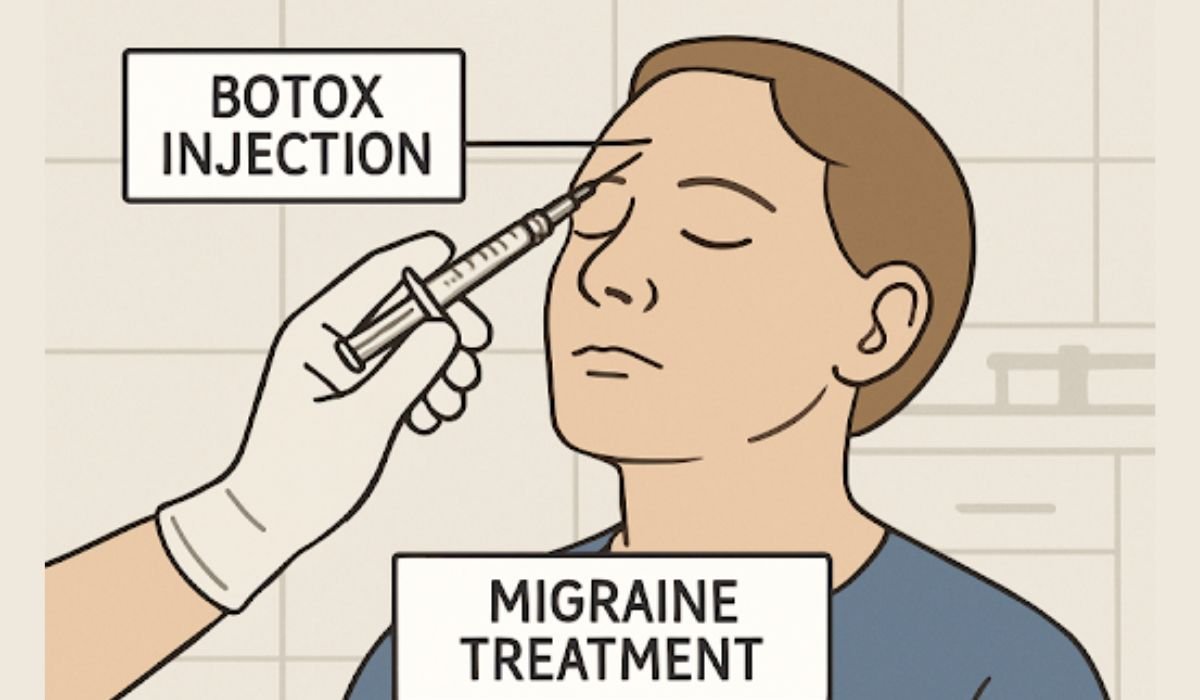Key Takeaways
- Botox is FDA-approved specifically for treating chronic migraines in adults.
- Its therapeutic action targets pain signals, muscle tension, and inflammation.
- Common myths about Botox include its perceived lack of approval and myths about instant results.
- Patient stories reflect significant improvements and restored quality of life.
Understanding Chronic Migraines
Chronic migraines are more than just severe headaches; they impact daily functioning and overall well-being. By definition, these migraines occur at least 15 days per month, with attacks often stretching four hours or longer. The constant nature of the pain can disrupt work, relationships, and everyday activities, making effective treatment vital.
While traditional medications and lifestyle modifications are frequently prescribed, not every patient finds relief through these methods. As a result, alternative therapies like Botox for migraines Jacksonville, FL, have drawn increased interest in recent years for their unique approach and promising results.
Botox, once primarily associated with cosmetic enhancements, stands apart as it has earned FDA approval for chronic migraine treatment in adults. The approval was based on substantial clinical research that demonstrated both the safety and efficacy of Botox in reducing migraine occurrences.
Unlike cosmetic procedures that target wrinkles, the therapeutic use of Botox involves targeting specific areas in the head and neck. Injections are administered every 12 weeks and are designed to interrupt the biological triggers that lead to migraines.
Botox: From Cosmetic Use to Migraine Treatment
The shift from cosmetic to medical applications for Botox highlights its versatility as a therapeutic tool. In the context of migraines, medical professionals utilize precise injection techniques to maximize pain relief and minimize potential side effects. This evolution in treatment was propelled by a surge in clinical evidence supporting its benefit for patients who have not responded to standard therapies. Whether you’re newly diagnosed or have suffered for years, understanding Botox’s transformation into a migraine solution provides insight into why so many sufferers now seek out this treatment. According to recent coverage by Mayo Clinic, more neurologists are incorporating Botox into their treatment protocols for chronic migraines, reflecting its increasing acceptance in mainstream medicine. This method addresses the muscle tension often linked to migraine pain and provides a non-daily medication alternative. Ongoing research continues to refine injection techniques and determine which patients are most likely to experience the greatest benefit from Botox therapy.
READ ALSO: Pro-Reed Com Tech Tales: Where Tech’s Cold Code Meets Warm Human Stories
How Botox Alleviates Migraines
- Inhibiting Pain Signals: Botox works by blocking the release of certain neurotransmitters involved in transmitting pain. This action disrupts the chain reaction that leads to migraine pain, essentially quieting the overactive nerve signals that contribute to attacks.
- Reducing Muscle Tension: Muscle contractions in the head and neck are thought to play a significant role in triggering migraines. Botox relaxes these muscles, reducing the intensity and frequency of migraines for many sufferers.
- Decreasing Inflammation: By limiting the release of specific inflammatory molecules, Botox can help curb the inflammatory responses associated with migraine development, providing both immediate and cumulative relief over time.
Debunking Common Myths About Botox for Migraines
Despite its increasing popularity and clinical validation, myths about Botox persist. A common misperception is that Botox is not a legitimate or FDA-approved treatment for migraines, when in fact, it gained official approval in 2010 for adults with chronic migraine conditions. For more detailed information on how Botox is used for migraine treatment, see Medical News Today. Another prevailing myth is that patients experience relief almost instantly. In reality, it usually requires multiple sessions, and improvements often emerge gradually after several weeks of treatment.
Separating fact from fiction allows patients to approach their treatment with realistic expectations and supports more productive conversations with healthcare providers.
Patient Experiences with Botox Treatment
Patients with treatment-resistant migraines often report dramatic improvements in frequency and severity after beginning Botox therapy. Some describe their experience as “life-changing,” with attacks reduced from daily occurrences to only a handful per month. Others highlight smaller, yet still meaningful, benefits, such as milder symptoms and a greater ability to participate in family and professional activities.
Stories from real patients also point to the emotional relief of regaining control over symptoms that once controlled their lives. For some individuals, the return of hope and daily stability outweighs even the physical benefits of fewer migraines.
Considerations and Potential Side Effects
Although Botox is considered safe for most adults with chronic migraines, it is not entirely without risk. Common side effects include soreness at the injection site, mild neck pain, and, on rare occasions, temporary weakness in the treated muscles. Serious adverse reactions are uncommon but should be promptly addressed with a healthcare provider.
Thorough consultation with a qualified pain specialist or neurologist helps identify any contraindications based on a patient’s medical history and concurrent medications. Patients are encouraged to communicate openly about their health status and any prior reactions to injections or medications.
Conclusion
Botox represents a modern, scientifically validated treatment for chronic migraines that goes beyond temporary symptom relief. Its multifaceted actions on pain pathways, muscle activity, and inflammation offer renewed hope for patients who have struggled to find lasting solutions through traditional therapies. By understanding the underlying science, dispelling common myths, and learning from real patient experiences, individuals affected by chronic migraines can make informed and empowered decisions regarding their care and future well-being.
YOU MAY ALSO LIKE: Unlocking Human Potential: How iofbodies.com Applications Are Rewriting the Rules of Health & Performance










